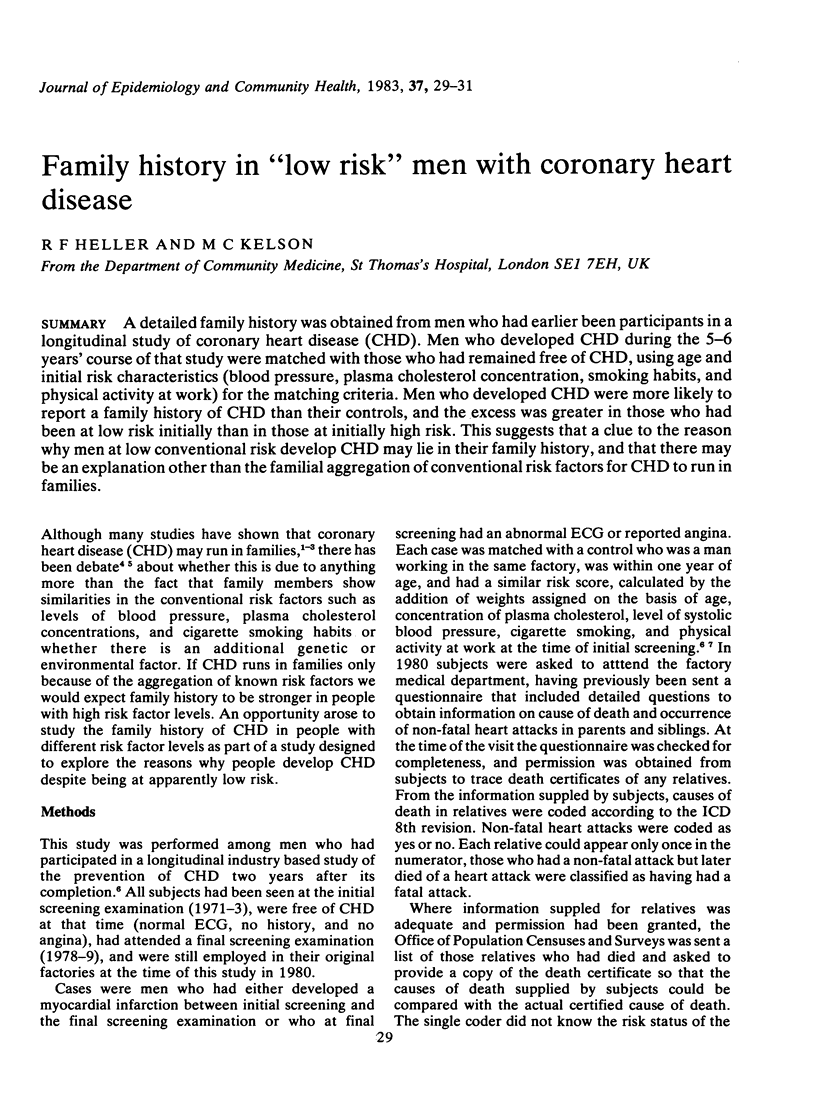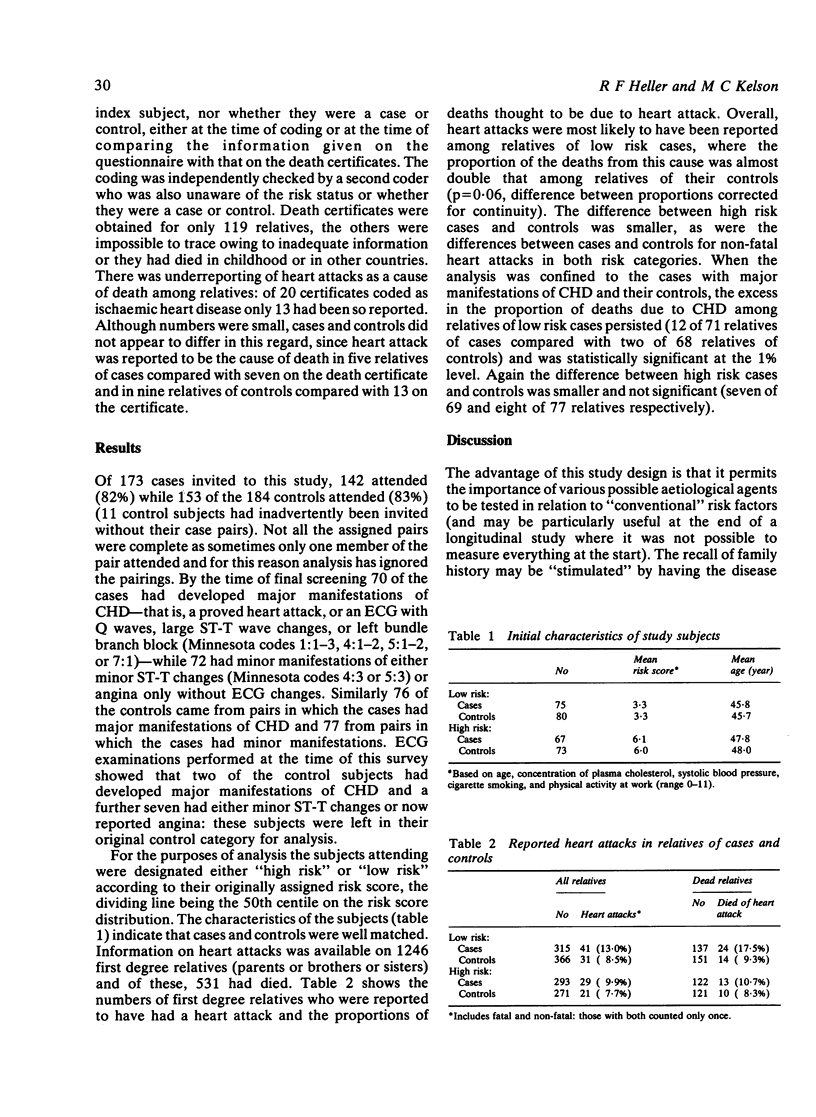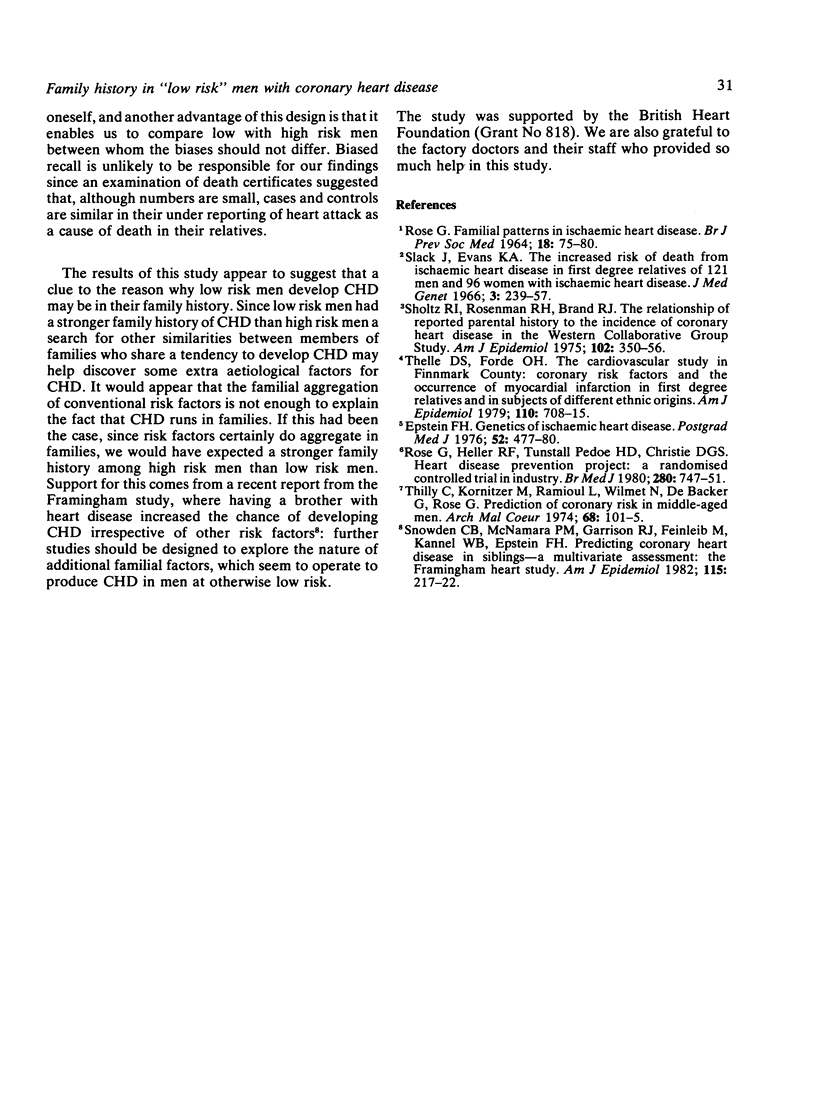Abstract
A detailed family history was obtained from men who had earlier been participants in a longitudinal study of coronary heart disease (CHD). Men who developed CHD during the 5-6 years' course of that study were matched with those who had remained free of CHD, using age and initial risk characteristics (blood pressure, plasma cholesterol concentration, smoking habits, and physical activity at work) for the matching criteria. Men who developed CHD were more likely to report a family history of CHD than their controls, and the excess was greater in those who had been at low risk initially than in those at initially high risk. This suggests that a clue to the reason why men at low conventional risk develop CHD may lie in their family history, and that there may be an explanation other than the familial aggregation of conventional risk factors for CHD to run in families.
Full text
PDF


Selected References
These references are in PubMed. This may not be the complete list of references from this article.
- Epstein F. H. Genetics of ischaemic heart disease. Postgrad Med J. 1976 Aug;52(610):477–480. doi: 10.1136/pgmj.52.610.477. [DOI] [PMC free article] [PubMed] [Google Scholar]
- ROSE G. FAMILIAL PATTERNS IN ISCHAEMIC HEART DISEASE. Br J Prev Soc Med. 1964 Apr;18:75–80. doi: 10.1136/jech.18.2.75. [DOI] [PMC free article] [PubMed] [Google Scholar]
- Rose G., Heller R. F., Pedoe H. T., Christie D. G. Heart disease prevention project: a randomised controlled trial in industry. Br Med J. 1980 Mar 15;280(6216):747–751. doi: 10.1136/bmj.280.6216.747. [DOI] [PMC free article] [PubMed] [Google Scholar]
- Sholtz R. I., Rosenman R. H., Brand R. J. The relationship of reported parental history to the incidence of coronary heart disease in the Western Collaborative Group Study. Am J Epidemiol. 1975 Oct;102(4):350–356. doi: 10.1093/oxfordjournals.aje.a112171. [DOI] [PubMed] [Google Scholar]
- Slack J., Evans K. A. The increased risk of death from ischaemic heart disease in first degree relatives of 121 men and 96 women with ischaemic heart disease. J Med Genet. 1966 Dec;3(4):239–257. doi: 10.1136/jmg.3.4.239. [DOI] [PMC free article] [PubMed] [Google Scholar]
- Snowden C. B., McNamara P. M., Garrison R. J., Feinleib M., Kannel W. B., Epstein F. H. Predicting coronary heart disease in siblings--a multivariate assessment: the Framingham Heart Study. Am J Epidemiol. 1982 Feb;115(2):217–222. doi: 10.1093/oxfordjournals.aje.a113293. [DOI] [PubMed] [Google Scholar]
- Thelle D. S., Førde O. H. The cardiovascular study in Finnmark county: coronary risk factors and the occurrence of myocardial infarction in first degree relatives and in subjects of different ethnic origin. Am J Epidemiol. 1979 Dec;110(6):708–715. doi: 10.1093/oxfordjournals.aje.a112851. [DOI] [PubMed] [Google Scholar]


